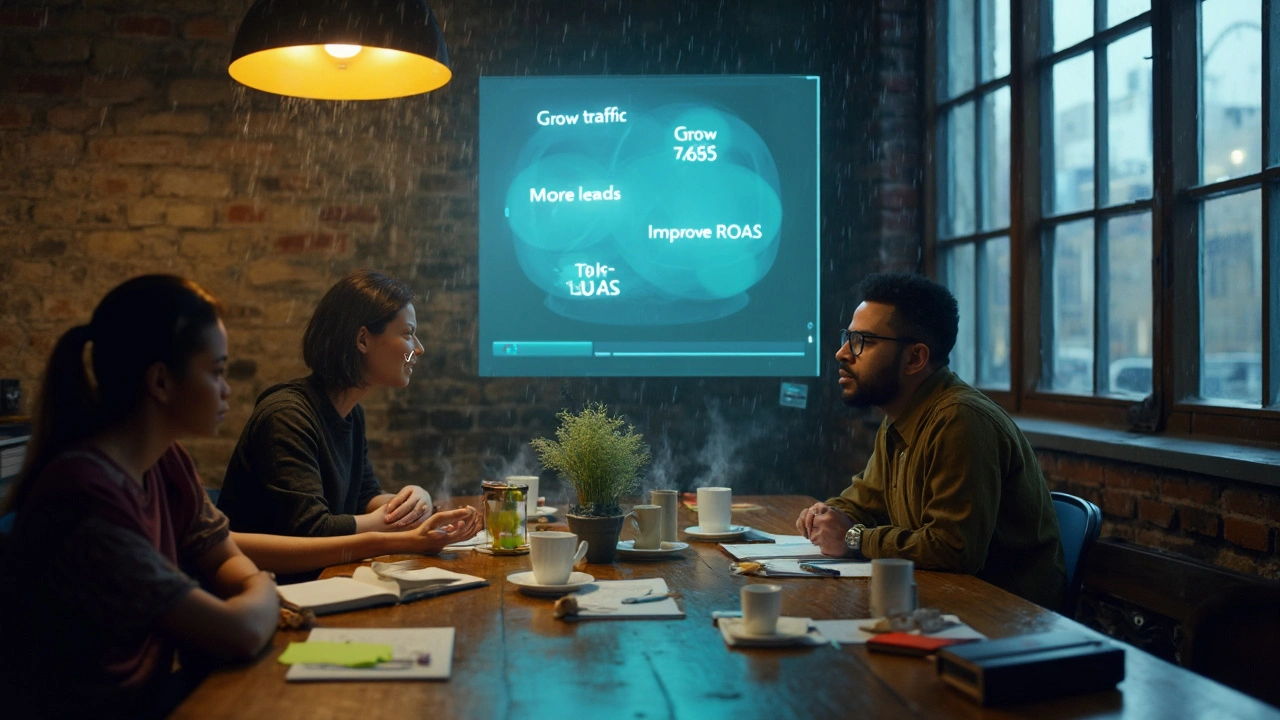
Maximize Online Marketing with ChatGPT: Complete Guide for Marketers
Turn ChatGPT into your marketing engine. Step-by-step playbooks, prompts, checklists, and metrics to grow traffic, leads, and ROAS-without guesswork.
If you’ve ever stared at a blank screen wondering what words will sell, you’re not alone. The good news? ChatGPT can turn that frustration into fast, effective copy. In just a few clicks you get headlines, body text, and calls‑to‑action that feel human but are backed by data. Below we’ll walk through the easiest way to set up a workflow, share proven prompts, and point out common pitfalls so your ads actually perform.
Step 1: Define your goal. Are you aiming for clicks, sign‑ups, or brand awareness? Write it down in one sentence – this becomes the seed for every prompt.
Step 2: Gather key details. Include product name, main benefit, target audience, and any tone preference (casual, urgent, friendly). The more precise you are, the sharper the output.
Step 3: Use a structured prompt. A reliable format is:Write three Facebook ad headlines for [product] targeting [audience]. Highlight [benefit] in a [tone] voice. Include a strong call‑to‑action.
Step 4: Review and tweak. ChatGPT gives you options; pick the one that feels most authentic, then run a second prompt to polish language or add a twist.
We tested the workflow on a SaaS tool that promises faster invoicing. The prompt produced these headlines:
- "Cut Invoice Time in Half – Try FastBill Today!"
- "Stop Chasing Payments – Automate with FastBill."
- "Get Paid Faster: Free Trial of FastBill Now."
Each line follows the formula: benefit first, product name second, urgent CTA last.
Another test for a fitness app used this prompt:Generate two Instagram carousel captions for a new HIIT program aimed at busy professionals. Keep it energetic and include a discount code.
The result was:
When you apply these patterns across Google Ads, LinkedIn Sponsored Content, or email subject lines, consistency improves click‑through rates. It also saves hours that would otherwise be spent brainstorming.
One common mistake is over‑relying on the first output. Always ask for variations: "Give me five more options with a playful tone" or "Rewrite these as short bullet points." This forces the model to explore different angles and often uncovers hidden gems.
Finally, remember that AI isn’t a set‑and‑forget tool. Pair it with quick A/B tests in your ad platform. Track which version drives better results, feed those insights back into future prompts, and you’ll keep the copy getting sharper over time.
By treating ChatGPT as a collaborative partner rather than a magic wand, you get faster drafts, more ideas, and ads that actually resonate. Ready to try? Grab your next campaign, fire up the prompt template above, and watch your ad copy go from flat to compelling in minutes.

Turn ChatGPT into your marketing engine. Step-by-step playbooks, prompts, checklists, and metrics to grow traffic, leads, and ROAS-without guesswork.